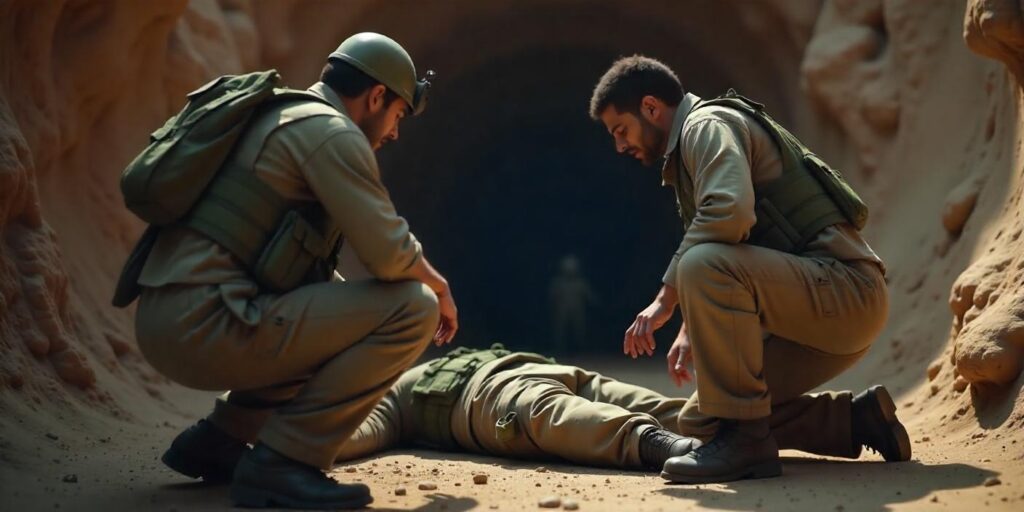
Jerusalem, 9 Jan. 2025 Israeli soldiers have recovered the body of a 53-year-old man from an underground tunnel in southern Gaza. The army gave this information to Wednesday. The army is trying to find out whether the other body found near him was that of his son. The body of Yusuf al-Jaydani has been found amid talks regarding the conflict between Israel and Hamas. The understanding may lead to the release of those held captive in Gaza while the war can be put to rest. Israel has declared many of the 100 prisoners dead, although it believes that almost half of the prisoners may still be alive. It is believed that Yusuf aljaydani will still be alive for some time before the body is found. Aljaydani’s death has put pressure on Israel to move forward with the agreement. Aljaydani and his 3 children were among the 250 prisoners whom Hamas had taken hostage after infiltrating southern Israel. 1200 people were killed in the Hamas attack.
THE NUMBER OF PALESTINIANS DIED OVER 46,
THE DEATH TOLL IN THE ISRAEL-HAMAS WAR HAS EXCEEDED 46,000. GAZA’S HEALTH DEPARTMENT GAVE THIS INFORMATION ON THURSDAY. THE MINISTRY SAID ABOUT THE INCREASE IN THE NUMBER OF PEOPLE KILLED IN THE 15-MONTH-OLD WAR THAT 46006 PEOPLE HAVE BEEN KILLED IN THIS WAR SO FAR. WHILE 109,378 WERE INJURED, MOST OF THEM CHILDREN AND WOMEN.
The Israel-Hamas Conflict: A Complex and Ongoing Struggle
The Israel-Hamas conflict is one of the most enduring and complex geopolitical struggles in modern history. Rooted in decades of political, territorial, and religious tensions, the conflict has claimed thousands of lives, displaced countless people, and shaped the policies of entire regions. It is characterized by asymmetrical warfare, with Israel, a powerful military state, facing off against Hamas, an Islamist militant organization with significant support in the Palestinian territories. This article aims to explore the origins of the Israel-Hamas conflict, its key events, underlying causes, and the wider regional and international ramifications.
Origins of the conflict
To understand the Israel-Hamas conflict, it is first necessary to understand the broader historical context of the Israeli-Palestinian conflict. The conflict has its roots more than a century ago, when tensions erupted between Jewish and Arab populations in the land of historic Palestine in the early 20th century. This was the time when movements of Jewish nationalists, such as Zionism, advocated establishing a Jewish homeland in Palestine, which was then part of the Ottoman Empire and later the British Mandate.
The establishment of the State of Israel in 1948 sparked the first Arab-Israeli war, after which Israel took control of much of the territory that was destined for a Palestinian state. The displacement of hundreds of thousands of Palestinian Arabs, called the “nakba” or “disaster”, and the resulting refugee crisis, aroused deep hatred. The Six-Day War of 1967 saw Israel capture the West Bank, the Gaza Strip, and East Jerusalem, which worsened the situation as Israel’s occupation of the Palestinians land.
THE RISE OF HAMAS
The Rise of Hamas
The rise of Hamas can be understood in the context of a time when there was growing frustration among the Palestinian people towards the PLO (Palestine Liberation Organization), which was previously the dominant force in Palestinian politics. The PLO, whose leader was a figure like Yasser Arafat, engaged in peace negotiations with Israel, especially the Oslo Accords of the 1990s, which allowed Palestinian autonomy in the West Bank and Gaza. However, these negotiations did not reach a final solution, and many Palestinians felt that the peace process was not yielding real results.
Hamas advocated armed resistance rather than the PLO’s approach, whose message attracted many Palestinians who had lost interest in the peace process and were frustrated with the Israeli occupation. Hamas provided social services, such as schools, hospitals, and charities, which brought it widespread support in the Palestinian territories.